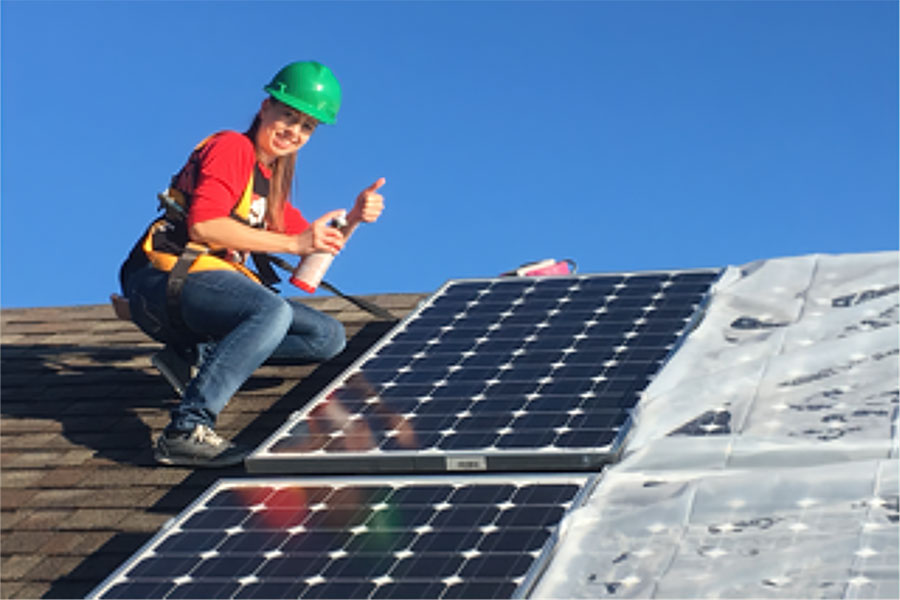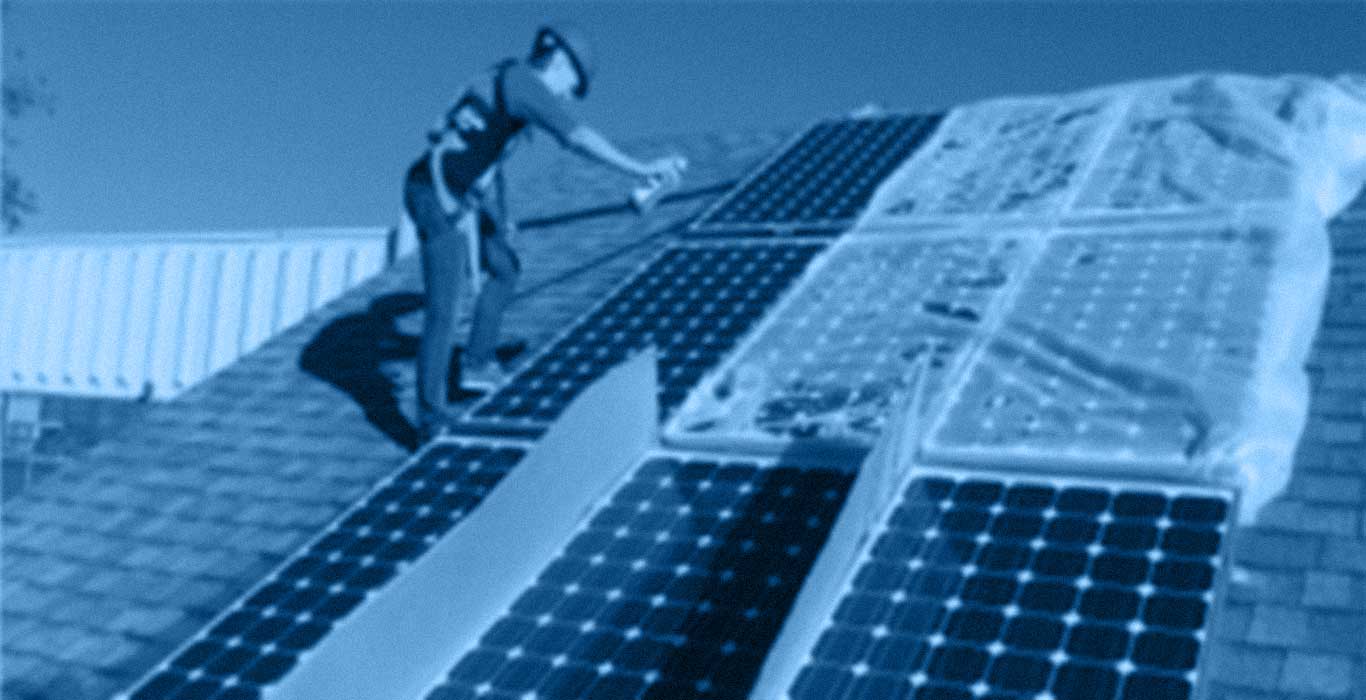An aqueous suspension containing a mixture of MOST nanoparticles, when applied to an uncoated surface and allowed to adhere, will help to clean the surface when rinsed with water. Exposure to a UV light source such as the sun, or simply warming, will adhere the coating to the surface (i.e., glass, metal, etc.).
Evaluating use of the self-cleaning coating
Madison Area Technical College (MATC) conducted a small study to evaluate the use of the self-cleaning coating as a method of minimizing the fouling and subsequent loss of power from solar panels already installed on one of their buildings.

An MATC student is shown applying this material to solar panels on a sloped residential roof for the preliminary trial. Obtaining a uniform coating was complicated by the inclined surface, the use of a fall protection harness, and variable wind gusts resulting in overspray. These challenges are overcome by applying MOST’s self-cleaning nanoparticles in a controlled factory setting.
Results of this study were published in the following reference: K.A. Walz, J.B. Shoemaker, A. Scholes, H. Jiang, J.L. Sanfilippo, J. M. Sanfillipo, W.A. Zeltner, and M.A. Anderson. Experimental Field Trial of Self-Cleaning Solar Photovoltaic Panels. Energy Conversion and Conservation Division. ASEE Annual Conference Proceedings, Salt Lake City, UT. (2018)
There are two points to note about using this suspension. 1) It may not adhere well to glass surfaces that have been previously coated with other materials. 2) This suspension has a short shelf-life of about one week and must be used quickly.
